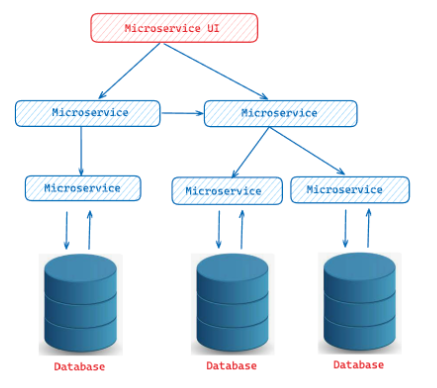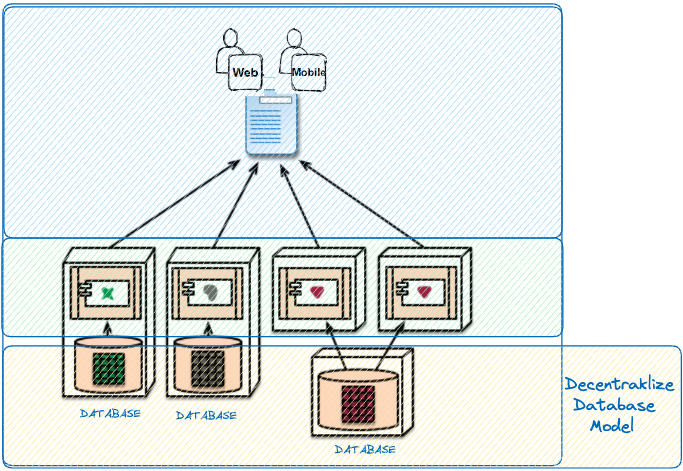Data: The Ultimate Hurdle in the Migration Journey to Microservices Architecture
 Firas SAADAOUI
Firas SAADAOUITable of contents

Developers frequently face major obstacles after deciding to split a monolithic system into several separate microservices, particularly when it comes to the data layer . The need for microservices to become independent poses important queries and uncertainties regarding data storage, consistency, and communication throughout the distributed architecture. This stage presents a complicated environment where maintaining data integrity, synchronizing data, and designing databases become critical. The shift from a monolithic architecture to a microservices architecture forces developers to confront the complexities of data management in a decentralized setting.
Challenges
Data migration 🤓 definition:
Data migration in the context of of microservices architecture involves the shift from a single source of truth, typically a centralized database in a monolithic structure, to establishing an individual source of truth for each microservice. This transformative process encompasses the conceptualization of new data models, the strategic design of new databases with minimal code refactoring in certain scenarios, and various considerations tailored to the specific requirements of the organization
Data concistency Accross different microservices:
As you navigate between multiple databases within a single system, inevitable challenges arise in the context of data management. Transactions become intricate, and fetching data from diverse sources introduces complexities that reverberate across your microservices landscape.
Schema changes and compatibility:
Let's understand this challenge by exemple :
Consider a scenario where a monolithic e-commerce application decides to transition to a microservices architecture. The original monolithic database has a unified schema for handling customer information, including fields likecustomer_id,name, andemail.Now, in the microservices architecture, there is a decision to introduce a new microservice dedicated to managing customer preferences. This microservice requires an extension of the customer schema to include additional fields such as
preferred_languageandnotification_preferences.To address this, backward compatibility ensures that existing microservices, like those managing order processing, can still retrieve customer information without disruption. Simultaneously, forward compatibility allows the new microservice dealing with customer preferences to smoothly integrate with the existing customer data structure.
Decentralized Database Management:
the shift from a centralized to decentralized model when talking about databases representes a fundamental evolution in multiple aspects such as the way the data is stored, processed and accessed .
With time the demands for scalability, resilience and responsevness , let the decentrilized apprach emerge ,this approach that empowers data to be distributed accross multiple nodes or locations , breaking away from the limitations of a single central data hub
Data communication and interportability:
In such components(databases) disposition, to ensure integrity and viability of the databses response, the smooth exhange of information between data sources is a crucial basis.
Effective interportability involves addressing protocols, formats, and standards to ensure that diverse microservice can undersand and process data consistently.This includees mastering standardized communication protocls , such as HTTP and MQTT and common data formats like JSON or XML
the complexity resides not only in establishing a common way for communication but also in navigating the intricacies of various technologies to ensure seamless data flow between systems while considering different architectures and functionalities
Strategies
In this context, deploying effective data strategies becomes paramount. Let's explore key strategies that empower organizations to overcome data hurdles and unlock the full potential of a microservices architecture. In this context, deploying effective data strategies becomes paramount. Let's explore key strategies that empower organizations to overcome data hurdles and unlock the full potential of a microservices architecture.
Event-Driven Architecture:
Implementing event-driven communication between microservices facilitates real-time data updates, enhancing responsiveness and reducing dependencies.CQRS (Command Query Responsibility Segregation):
Separating read and write operations allows tailoring data models for specific tasks, optimizing performance and scalability within microservices.API Gateways:
I already wrote a blog about it , you can check this link API Gateway. Employing API gateways centralizes data access, providing a unified entry point, and allows for data transformation and aggregation to meet different microservices' needs.Asynchronous Communication:
Leveraging message queues for asynchronous communication decouples microservices, enabling them to operate independently while ensuring eventual data consistency.Best practices
These best practices aim to address challenges and optimize the data management aspect of microservices architecture.
Use of Caching Mechanisms:
Implement caching strategies to reduce latency and enhance performance, especially when dealing with frequently accessed data.
Granular Data Management:
Break down large databases into smaller, manageable units aligned with microservices to enhance scalability and maintainability.
Robust Error Handling:
Implement robust error-handling mechanisms to gracefully manage failures, ensuring data consistency even in the face of unexpected events.
Decentralized Data Ownership:
Clearly define data ownership within microservices to avoid conflicts, promote autonomy, and establish a clear understanding of responsibilities.
Conclusion
Navigating the intricacies of data within a microservices architecture proves to be a substantial challenge, as it varies significantly based on the unique requirements of each organization.
The vast landscape of data management demands tailored strategies, emphasizing the need for a nuanced and customized approach to effectively overcome the hurdles encountered during the migration journey to microservices architecture.
Subscribe to my newsletter
Read articles from Firas SAADAOUI directly inside your inbox. Subscribe to the newsletter, and don't miss out.
Written by

Firas SAADAOUI
Firas SAADAOUI
Software engineer with a robust background in Java development, certified in Scrum, and proficient in Azure. Extensive experience in the finance sector with a focus on microservices architecture. Skilled in designing, developing, and maintaining enterprise-level information systems for management, compliance, and reporting. Adept at working with databases, middlewares, and APIs, and implementing robust security measures. Demonstrates a deep understanding of Java programming and expertise in Industry Standard protocols.